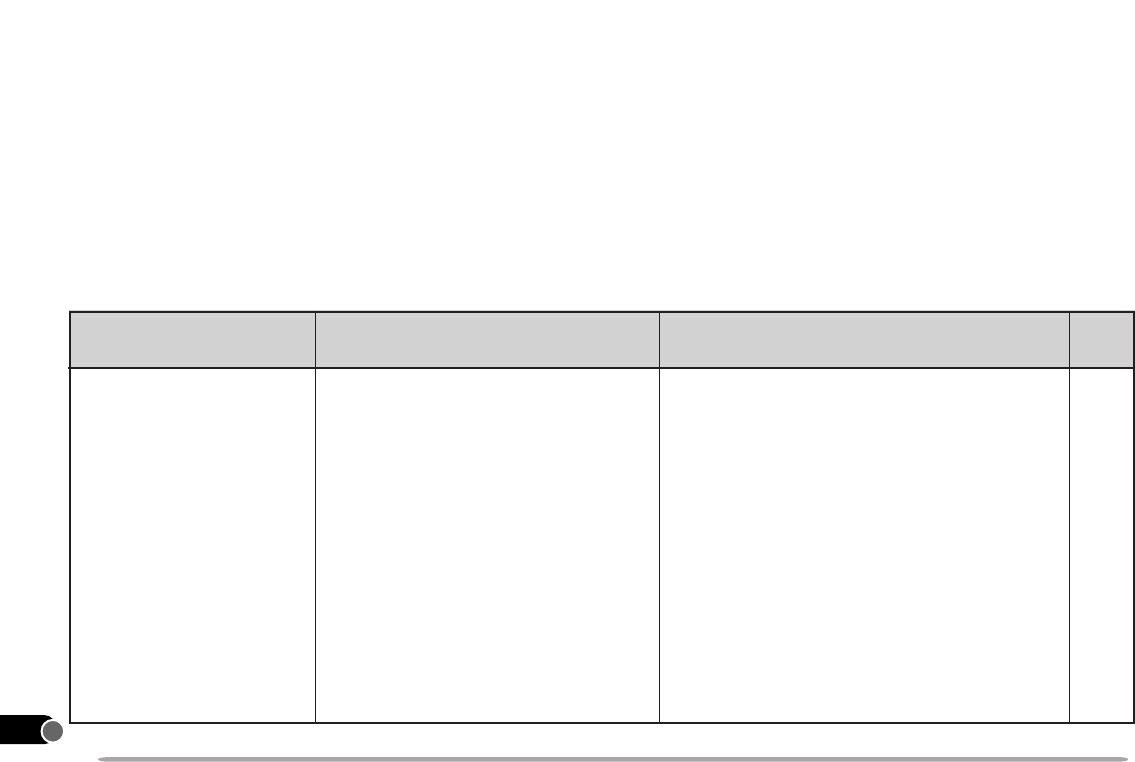
88
1
2
3
4
5
6
7
8
9
10
11
12
13
14
15
16
17
18
19
20
21
TROUBLESHOOTING
The problems described in this table are commonly encountered operational malfunctions. These types of difficulties are
usually caused by improper hook-up, accidental incorrect control settings, or operator error due to incomplete programming.
These problems are usually not caused by circuit failure. Please review this table, and the appropriate section(s) of this
instruction manual, before assuming your transceiver is defective.
Note: When 2 frequencies are received in the same band and these frequencies have relationships per the equation below or other similar relationships,
an internal heterodyne may be heard. This is not a defect.
Continued
Problem
Probable Cause
Corrective Action
Page
Ref.
1 The power cable was connected
backwards.
2 One or more of the power cable
fuses are open.
3 The front panel was not connected
securely to the main unit of the
transceiver.
4 The connectorized cable was not
correctly connected.
The transceiver will not
power up after connecting
a 13.8 V DC power supply
and pressing the PWR
switch. Nothing appears
on the display.
1 Connect the supplied DC power cable
correctly:
Red ➞ ( + ); Black ➞ ( – ).
2 Look for the cause of the blown fuse(s).
After inspecting and correcting any
problems, install a new fuse(s) with the
same ratings.
3 Separate the front panel from the main
unit by using the release switch on the
rear of the front panel, then lock the front
panel securely to the main unit by using
the same switch.
4 Connect the connectorized cable correctly.
3, 4
5
84
3, 4
VHF/UHF mode: (UHF receive frequency – 45.05 MHz) x 2 – (VHF receive frequency + 38.85 MHz) x 4 = 38.85 MHz or 45.05 MHz
(UHF receive frequency – 45.05 MHz) – (VHF receive frequency + 38.85 MHz) x 2 = 38.85 MHz
VHF/VHF mode: (VHF receive frequency on the UHF band + 45.05 MHz) x 5 – (VHF receive frequency on the VHF band + 38.85 MHz) x 5 = 38.85 MHz or 45.05 MHz
(VHF receive frequency on the UHF band + 45.05 MHz) x 4 – (VHF receive frequency on the VHF band + 38.85 MHz) x 4 = 38.85 MHz
(VHF receive frequency on the VHF band + 38.85 MHz) – (VHF receive frequency on the UHF band + 45.05 MHz) x 0.75 = 38.85 MHz
UHF/UHF mode: (UHF receive frequency on the VHF band – 38.85 MHz) x 3 – (UHF receive frequency on the UHF band – 45.05 MHz) x 3 = 38.85 MHz or 45.05 MHz
(UHF receive frequency on the VHF band – 38.85 MHz) x 4 – (UHF receive frequency on the UHF band – 45.05 MHz) x 4 = 38.85 MHz or 45.05 MHz


















